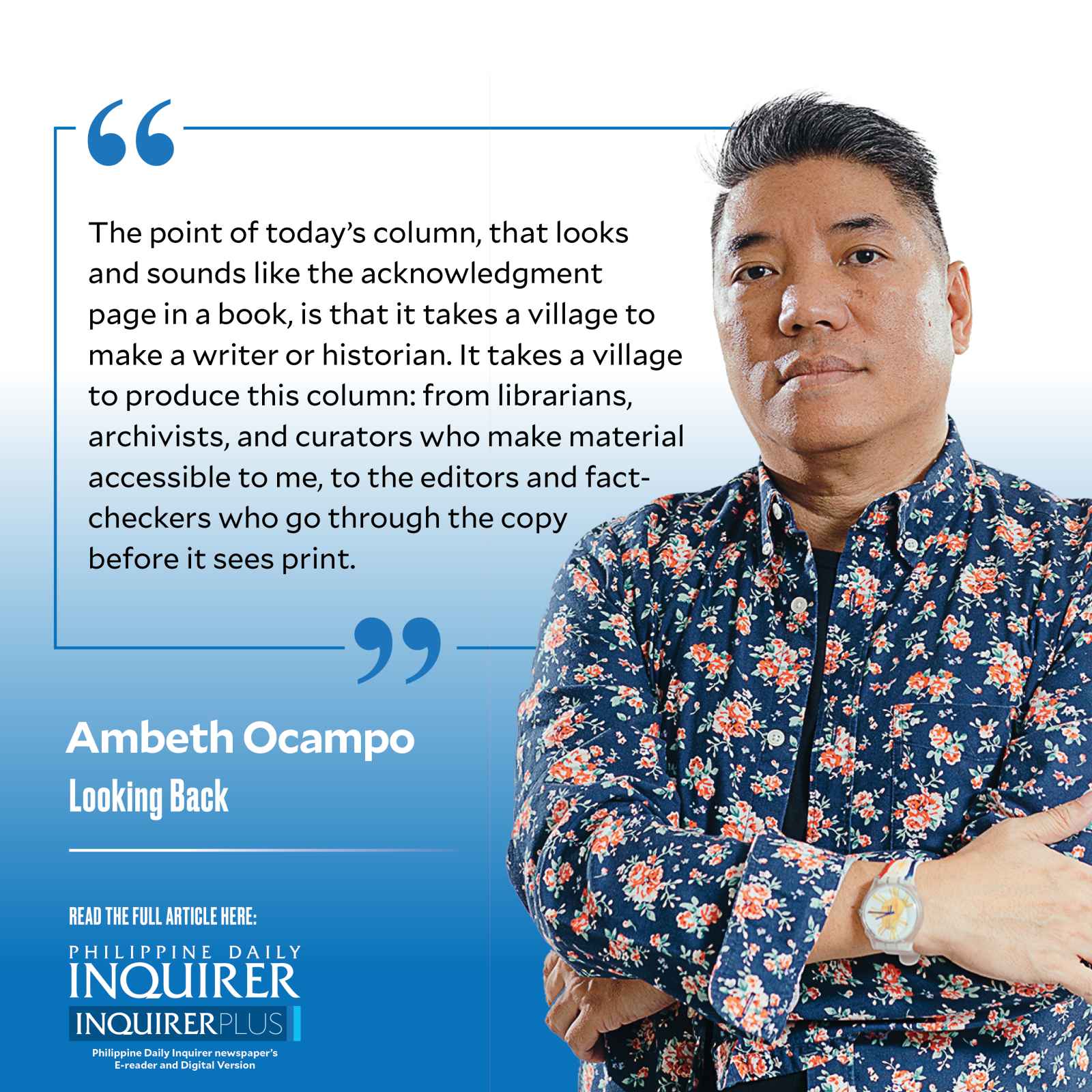Teachers and mentors

National Teacher’s Day would’ve slipped by me yesterday, if not for a handful of thoughtful greetings received and some pages on my feed that alerted me to it. For many years, on or around National Teacher’s Month, I would dedicate a column or two to those who shaped me into the public historian I am today. Some of those I met in a classroom setting were conferred the prestigious, and highly competitive Metrobank outstanding teacher award: Emerita Quito, Marcelino Foronda, Esperanza Cheekee, Julia dela Cruz, and Doreen Fernandez. Over the years, I have come to know other Metrobank outstanding teachers personally, and while they were not my teachers, I was inspired by their example: Elena Cutiongco, Onofre Pagsanghan, Ramon Reyes, Milagros Ibe, Evelina Vicencio, Felicitas Pado, Mari-Jo Ruiz, Tereso Tullao, Wyona Patalinghug, Teresita Pedrajas, Maria Assunta Cuyegkeng, Priscelina Legasto, Maria Christina Astorga, Ricardo Abad, Queena Lee-Chua, Rafael Bundoc, Raquel Fortun, Benilda Santos, Dina Ocampo, Catherine Vistro-Yu, Emilyn Espiritu, Analyn Salvador-Amores, and Ricardo T. Jose. Whatever undeserved reputation I have as a good teacher is simply a pale reflection of the outstanding teachers enumerated above and much more.
Writing came naturally to me because of teachers who encouraged me to read: Guillermo Pesigan, Marlu Vilchez, Soledad S. Reyes, Rayvi Sunico, Edilberto Alegre, and Doreen Fernandez. If any of them emphasized English grammar through grading, I would never have become a writer, because to this day, I wouldn’t know a gerund or dangling modifier if I met them in a dark alley. I started writing, at the tail end of the first Marcos era, when the press was censored and I was left alone because history, being about the past, was not political and considered “safe.” It was many years later that I realized one could get away with commenting on the present by using the past. Millet Martinez Mananquil was my first editor, at Weekend Magazine, and for most of my career my editors have been women: Doris Nuyda, Letty Jimenez-Magsanoc, Lorna Kalaw-Tirol, Emmie Velarde, Norma Chikiamco, Lea Makabenta, Girlie Naguit, Thelma San Juan, and, presently, Yasmin Lee Arpon and Juliet Labog-Javellana.
From the above, I remember Makabenta who taught me early on that “Truth is not a shield against libel.” When I started writing, literally in the last century, I had to sit meekly by the editor’s desk while they marked out my copy in red. Jimenez-Magsanoc would patiently go over my copy and show me how moving one sentence somewhere else would make a story better. She would point out an encircled word and ask, “what exactly do you mean?” After I explained what I wanted to say, her follow-up would be suggestions: “Will it be clearer if we use this word, stronger if we use another word?” Younger journalists do not have this old-school one-on-one training anymore because copy submitted by email is next seen finished and edited online. Once, in the Inquirer office, I overheard someone arguing with Kalaw-Tirol over the editing of her precious copy. Lorna pointed me out to the person and declared, “That, is Ambeth Ocampo, he submits to editing, why can’t you do the same?”
Then I had readers over my shoulder, Carmen Guerrero Nakpil would often comment on my columns, advising me to make them “stronger” through careful structure and judicious choice of words. Doreen Fernandez, fed up with slips that sometimes went past my editors, offered assistance that I was too embarrassed to accept: “why don’t you send your columns to me for copy editing before sending them to the Inquirer.” Gilda Cordero-Fernando once advised me to keep bits of information that were too short to be developed into a column of 800 words, but were interesting in themselves. All these saw print, thanks to Thelma San Juan, in two short-lived columns “(H)ISTORYA” on Philippine history and “SANTO” on obscure Catholic saints and their quirky stories. Two examples: Cassian of Imola was stabbed to death by his students using their sharp pens or “styli,” and Wilgefortis who, on her wedding night, prayed so hard to God to preserve her chastity, she miraculously grew a beard and presumably died a virgin.
A student asked me recently, how did you get to know so many famous people, people whose names we only see in our graduate school reading lists? My snappy answer was, if you are as old as me, you would have met quite a lot of people, too. But the point of today’s column, that looks and sounds like the acknowledgment page in a book, is that it takes a village to make a writer or historian. It takes a village to produce this column: from librarians, archivists, and curators who make material accessible to me, to the editors and fact-checkers who go through the copy before it sees print. Next year, I will write about all the male teachers and mentors as well as the editors who made me and this column possible.
—————-
Comments are welcome at aocampo@ateneo.edu
















